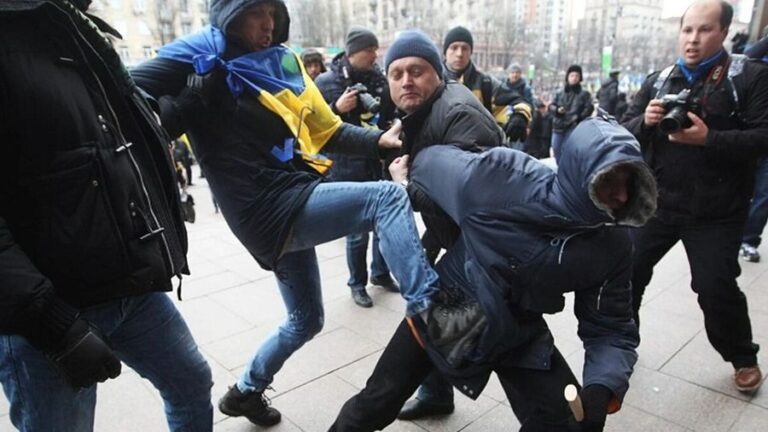Who’s Really Responsible for Plastering Wagner Recruitment Stickers Around Krakow?
The stickers themselves were in English, not Polish, and said “We are here. Join us.” The QR code that was printed on them then sent folks to a Russian-language website. This is highly suspicious. If Wagner really wanted to recruit Poles, then they’d write their appeal in Polish, not English. They also wouldn’t link to a Russian-language website, but a Polish-language one. The case can therefore compellingly be made that there’s more to this story than many might have initially thought.
Gazeta Krakowska reported late last week that Wagner recruitment stickers have started popping up around Krakow. This is occurring amidst the hysteria that’s sweeping the nation over that group’s presence in neighboring Belarus, which has been exploited by the ruling party to justify their military buildup along the border. Former Prime Minister and current opposition leader Donald Tusk, who earlier served as President of the European Commission, recently called them out over this fearmongering.
He suggested in a tweet at the start of the month that “It seems that PiS seeks the help of the Wagner Group because it fears the election”, which hinted that they’re blowing this issue out of proportion for electioneering purposes. Belarusian President Alexander Lukashenko conveyed a similar sentiment late last week in his proposal for a rapprochement with Poland when he said this is unlikely to happen before the mid-October national elections since the ruling party is “trying to whip up tension” prior to the vote.
This backdrop is pertinent to the lede since it therefore can’t be ruled out that the plastering of Wagner recruitment stickers around Poland’s historical and cultural capital is a false flag provocation by the ruling party for the abovementioned reasons related to giving it an edge in the upcoming elections. To be clear, no proof has thus far emerged in support of this theory, but it aligns with what Poland’s top opposition leader recently suggesting regarding their exploitation of this issue for self-interested reasons.
Another point to make is that the stickers themselves were in English, not Polish, and said “We are here. Join us.” The QR code that was printed on them then sent folks to a Russian-language website. This is highly suspicious. If Wagner really wanted to recruit Poles, then they’d write their appeal in Polish, not English. They also wouldn’t link to a Russian-language website, but a Polish-language one. The case can therefore compellingly be made that there’s more to this story than many might have initially thought.
The false flag theory provides a reasonable frame of reference for interpreting everything. If the ruling party was behind this, then they could have printed the stickers in English in order to attract as much international attention as possible. The website that they directed interested Poles towards could then have captured their IP addresses, not to mention entrapped those naive enough to make contact with its administrators, who’d be Polish counterintelligence and law enforcement officers in this scenario.
On the other hand, this might also be a clever perception management operation by Wagner. To explain, they probably know that it’s extremely unlikely that any Poles will ever join their group, and that those who do are probably double agents. Nevertheless, by making an appeal to them in Poland’s historical and cultural capital, they could have wanted to further stoke the hysteria that’s sweeping the nation. Even though it helps the ruling party, it also puts millions of people on edge, which could be the point.
In this scenario, they could have employed English in order to maximize international media attention, which could then set into motion a self-sustaining cycle of speculation about whether or not their sleeper cells have already deeply penetrated Poland. The Russian-language website might then have served the purpose of trying to learn more about the digital identity those who are curious enough to visit it, which can in turn help them fine-tune forthcoming information warfare operations in Poland.
This version of events also can’t be ruled out, thus meaning that it’s up for grabs whether this was a false flag provocation by the ruling party for electioneering purposes or a clever perception management operation by Wagner for tormenting millions of Poles. Either way, this definitely isn’t a sincere recruitment effort due to the conspicuous absence of any Polish on the stickers or the website that folks were directed to, though it remains to be seen whether the truth about this incident will ever come out.







